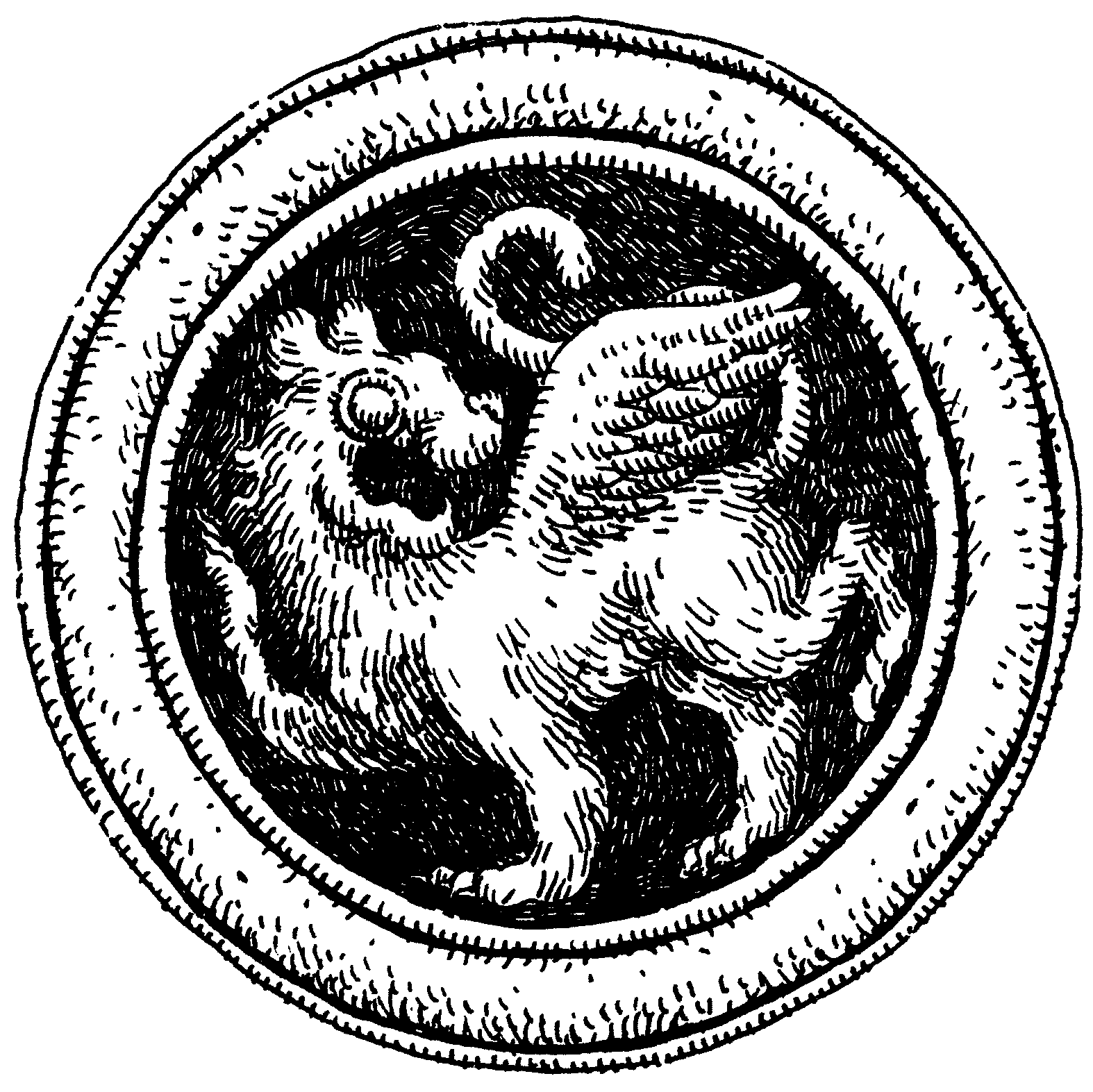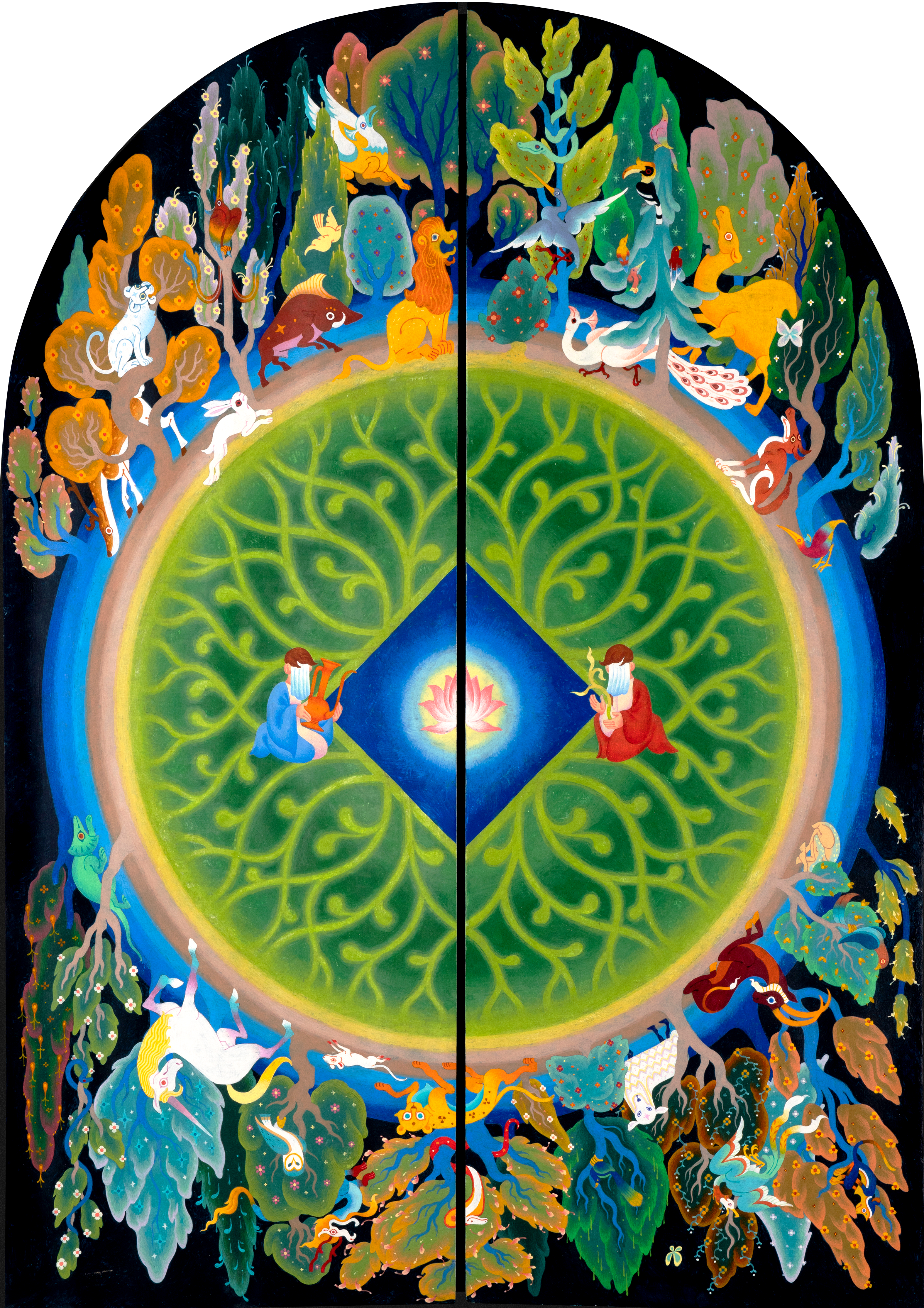
Paradise, 2024
The story begins within a paradisiacal garden, tended by the two caretakers. At the centre of this place, within a sacred pool, lies a single lotus flower. The roots of this sacred flower extended to encompass the whole garden.
Broken, thus Bloom
A series of paintings exploring the human journey through trauma and rebirth
Broken, thus Bloom (2024) is a series of 11 paintings, a poetic rendition of a self-actualization journey interpreted from the artist's, Narsid, personal experience with trauma. Within this work, Narsid tries to communicate his complex journey in dealing with traumatic experiences and coming to terms with many of his life-long complexes. Broken, thus Bloom is built upon the Swiss psychoanalysis Carl Gustav Jung's idea of the Individuation process - a process in which a person attempts to become truly an individual by completely integrating every aspect of their personality, especially the ones they deem unworthy and thus repressed - a point which he also argues, could only begin by becoming utterly, completely, and devastatingly broken. Only from the depth of self-annihilation can an individual begin their journey of self-actualization and thus 'Bloom' into a more complete version of themselves - similar to how a seed germinates by breaking its coat.
Due to the complex philosophical, even spiritual, nature of this journey, Narsid decided to propagate it through a series of allegorical imageries steeped in religious symbolism and mythological motifs. The audience will be taken on a journey through a paradisiacal allegory of the human psyche, guided by the two caretakers - a representation of the different aspects of our personality. The narrative will tell a story of how these two come to terms with the destruction of the heavenly abode and their failure to protect it, leading to their eventual destruction, resurrection, and transcendence.
Broken, thus Bloom is an attempt to capture the tale of coming to terms with the fragile and vulnerable nature of humanity, that it is only mundane for us to face the total annihilation of our identity before our eventual journey to wholeness. To be broken is thus to bloom.
Solo Exhibition at 1559 Space
2024
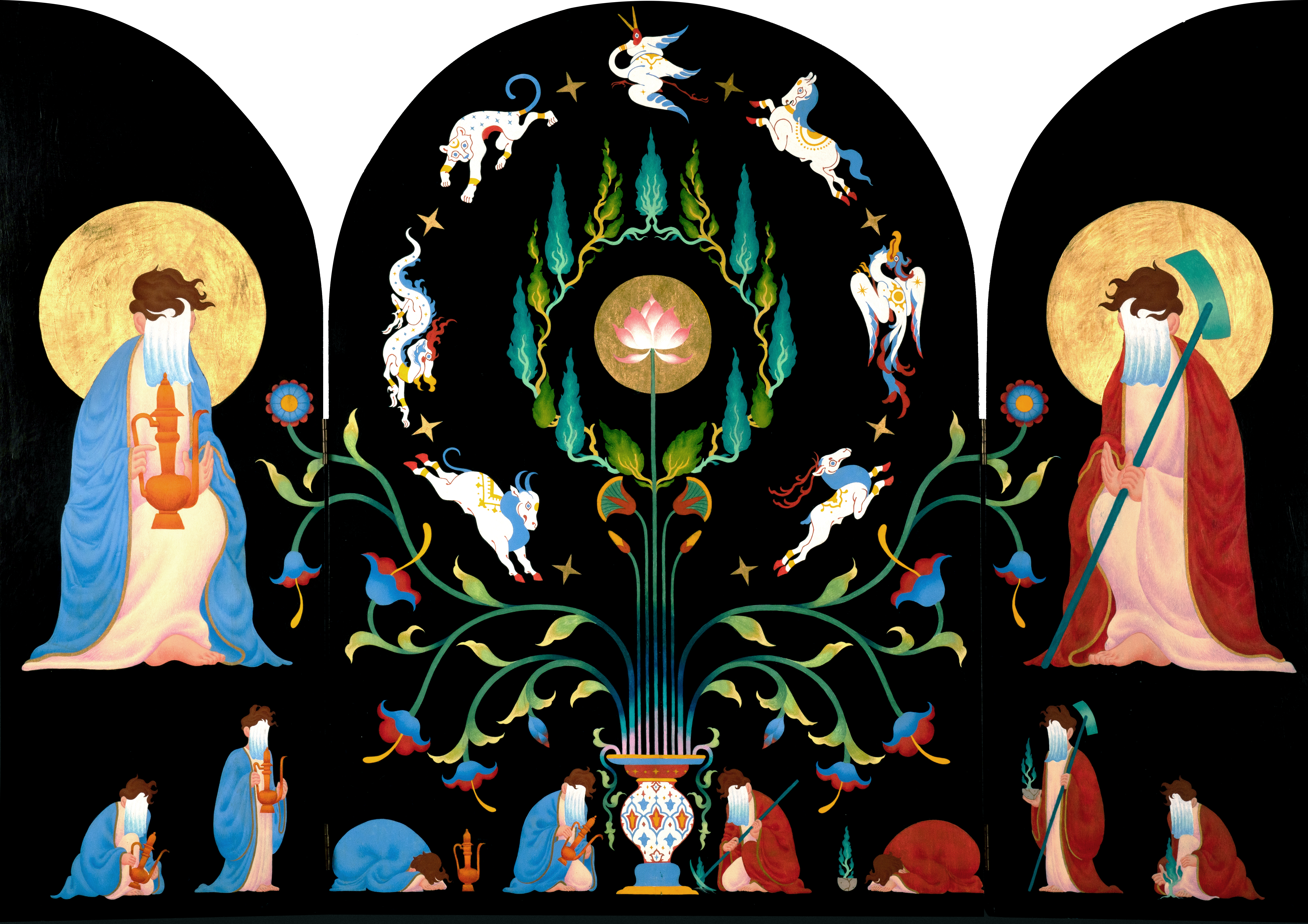
Within the triptych, the narrative expands. Here, the sequence shows the connection between all characters. The two caretakers each tend to their duty, one watering and nurturing the sacred blossom, the other pruning and planting new saplings. From their care, the garden blooms. All the trees and flowers then sprang from their labour, providing habitat and nourishment to all the birds and the beasts that came to call this place home.
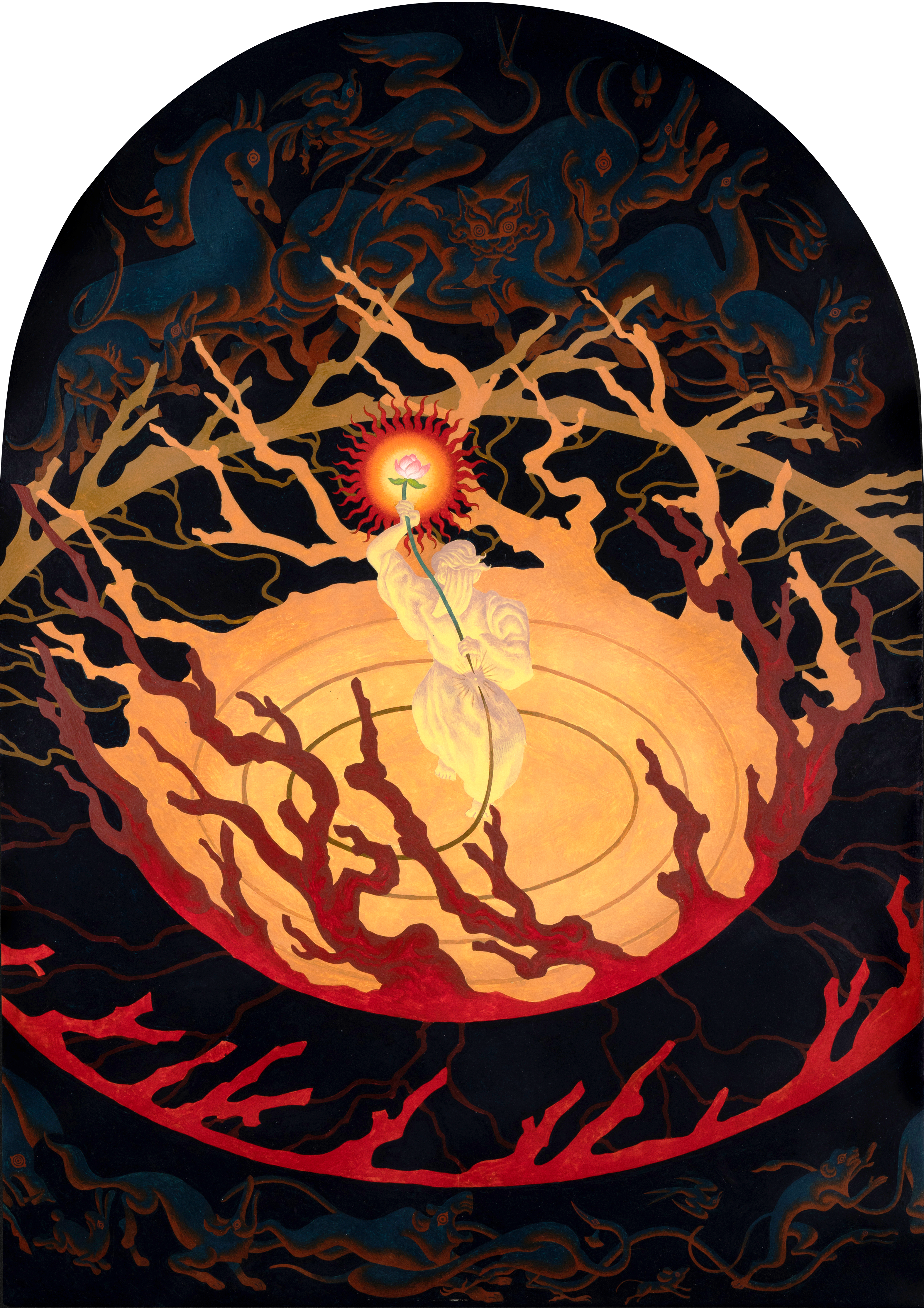
Broken, 2024
But after a long peace, disaster struck. A rogue hunter found its way into the sanctuary and shot down a crane, one of the garden’s divine residents. One of the caretakers, unfortunately, witnessed this traumatic act of violence. Overwhelmed by guilt that he could not protect the inhabitants of this place, the caretaker flew into despair and madness. He grabs the stalk of the sacred lotus and tears it apart. The sacred pool dried, the plants withered, and all the animals fled in panic.
But after a long peace, disaster struck. A rogue hunter found its way into the sanctuary and shot down a crane, one of the garden’s divine residents. One of the caretakers, unfortunately, witnessed this traumatic act of violence. Overwhelmed by guilt that he could not protect the inhabitants of this place, the caretaker flew into despair and madness. He grabs the stalk of the sacred lotus and tears it apart. The sacred pool dried, the plants withered, and all the animals fled in panic.
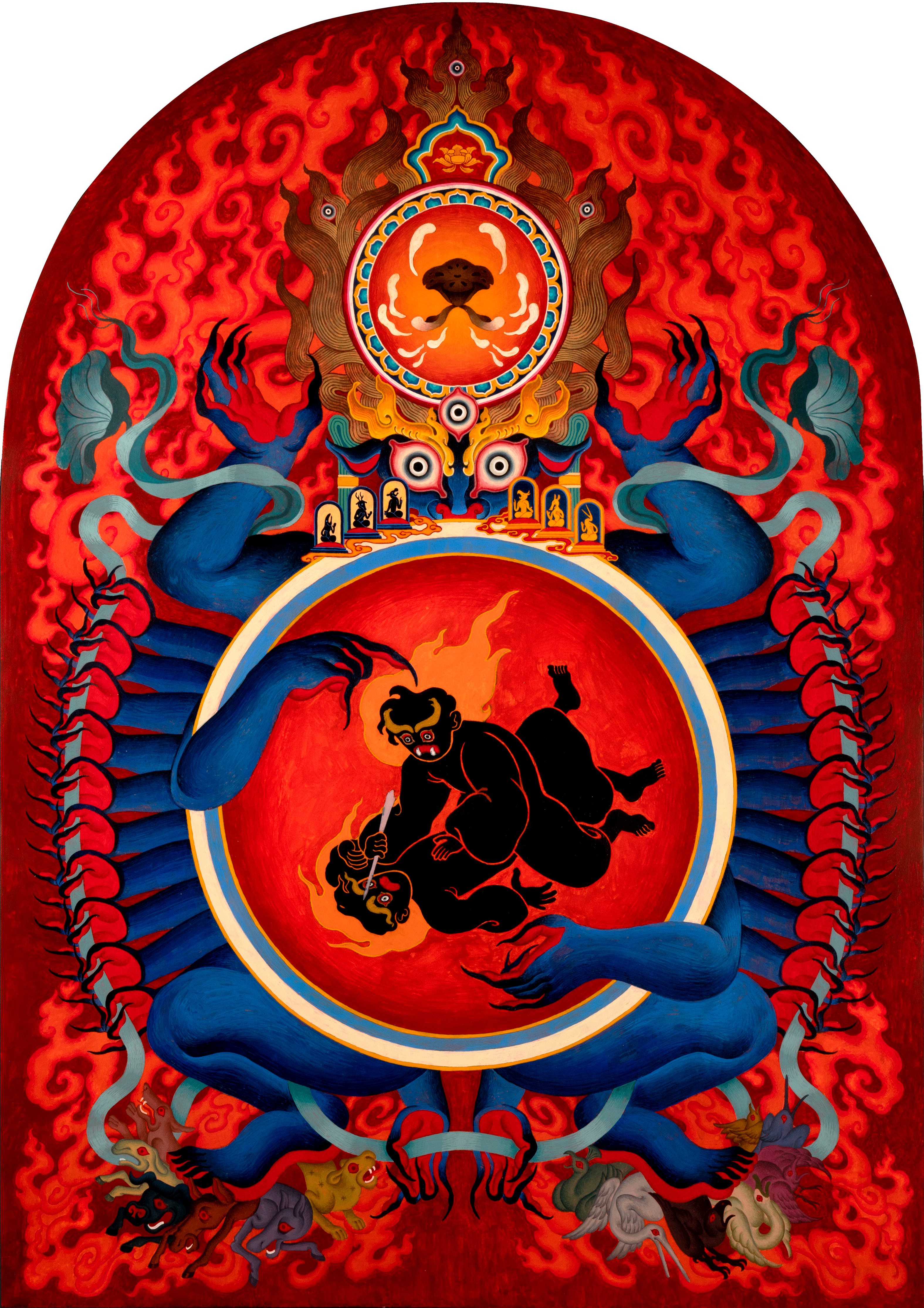
Wrath, 2024
The destruction of their paradise forced the two caretakers to expel themselves from the heavenly garden, to wander the desolate wasteland as penance. The ripped sacred lotus is still in the possession of the caretakers, slowly wilting away. Alone in desolation, the two caretakers bicker. One kept asking how this could happen, and the other couldn’t stop blaming themselves. The argument raged on until one burst out in anger and unleashed his fury upon the other. The lotus they took is finally dead.
The destruction of their paradise forced the two caretakers to expel themselves from the heavenly garden, to wander the desolate wasteland as penance. The ripped sacred lotus is still in the possession of the caretakers, slowly wilting away. Alone in desolation, the two caretakers bicker. One kept asking how this could happen, and the other couldn’t stop blaming themselves. The argument raged on until one burst out in anger and unleashed his fury upon the other. The lotus they took is finally dead.
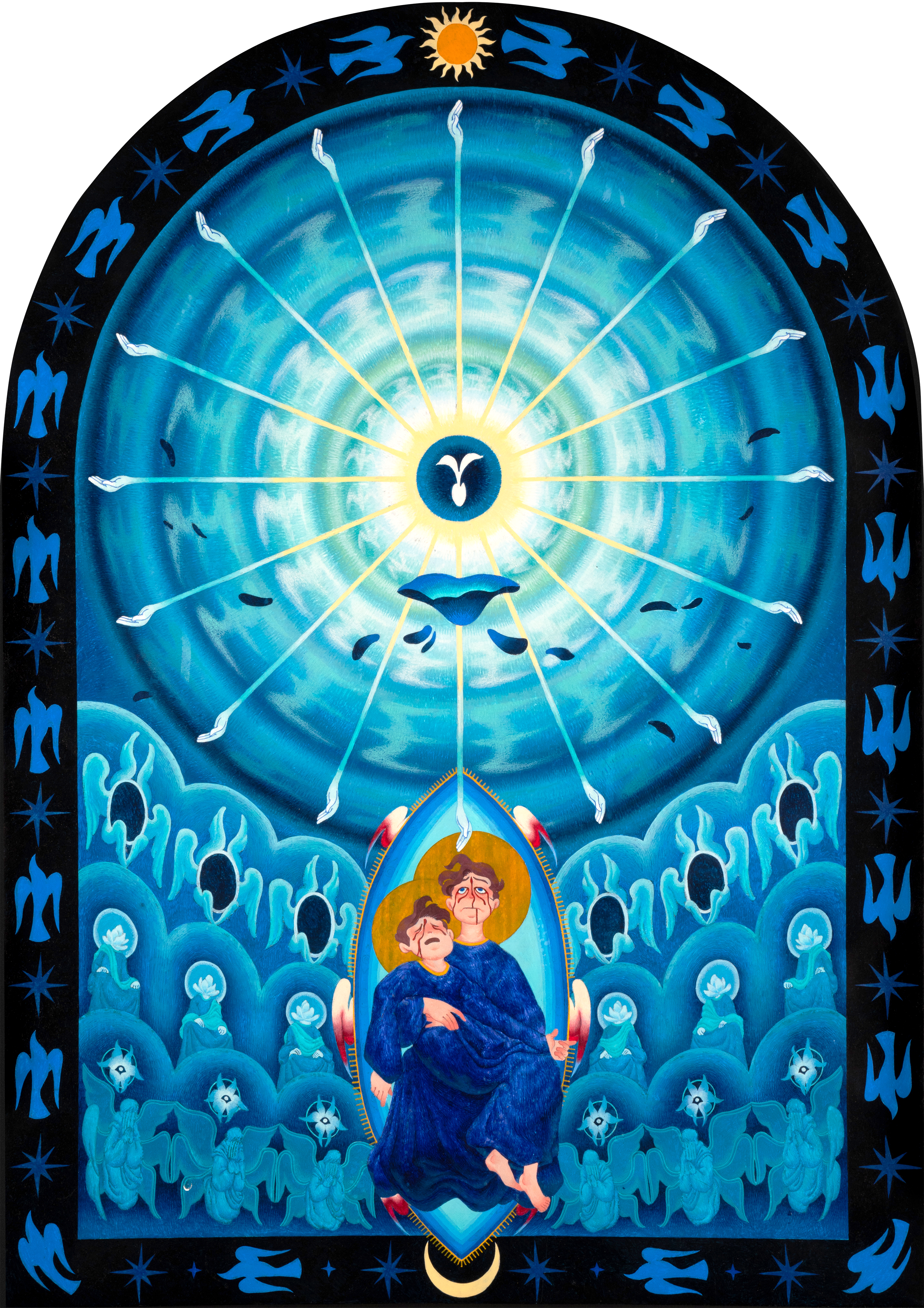
Resurrection, 2024
Such an act of cruelty paralyzes the two caretakers into a catatonic state. Their deeper psyche
took control of the situation by manifesting into reality and began assessing, questioning, and reflecting on what had happened. Realizing his transgression, the one who strikes raises the body of the other, holding him close in repentance. The wounds from his action appeared on both their forehead, revealing their shared identity. Their bloody tears began the lotus seed’s germination.
took control of the situation by manifesting into reality and began assessing, questioning, and reflecting on what had happened. Realizing his transgression, the one who strikes raises the body of the other, holding him close in repentance. The wounds from his action appeared on both their forehead, revealing their shared identity. Their bloody tears began the lotus seed’s germination.
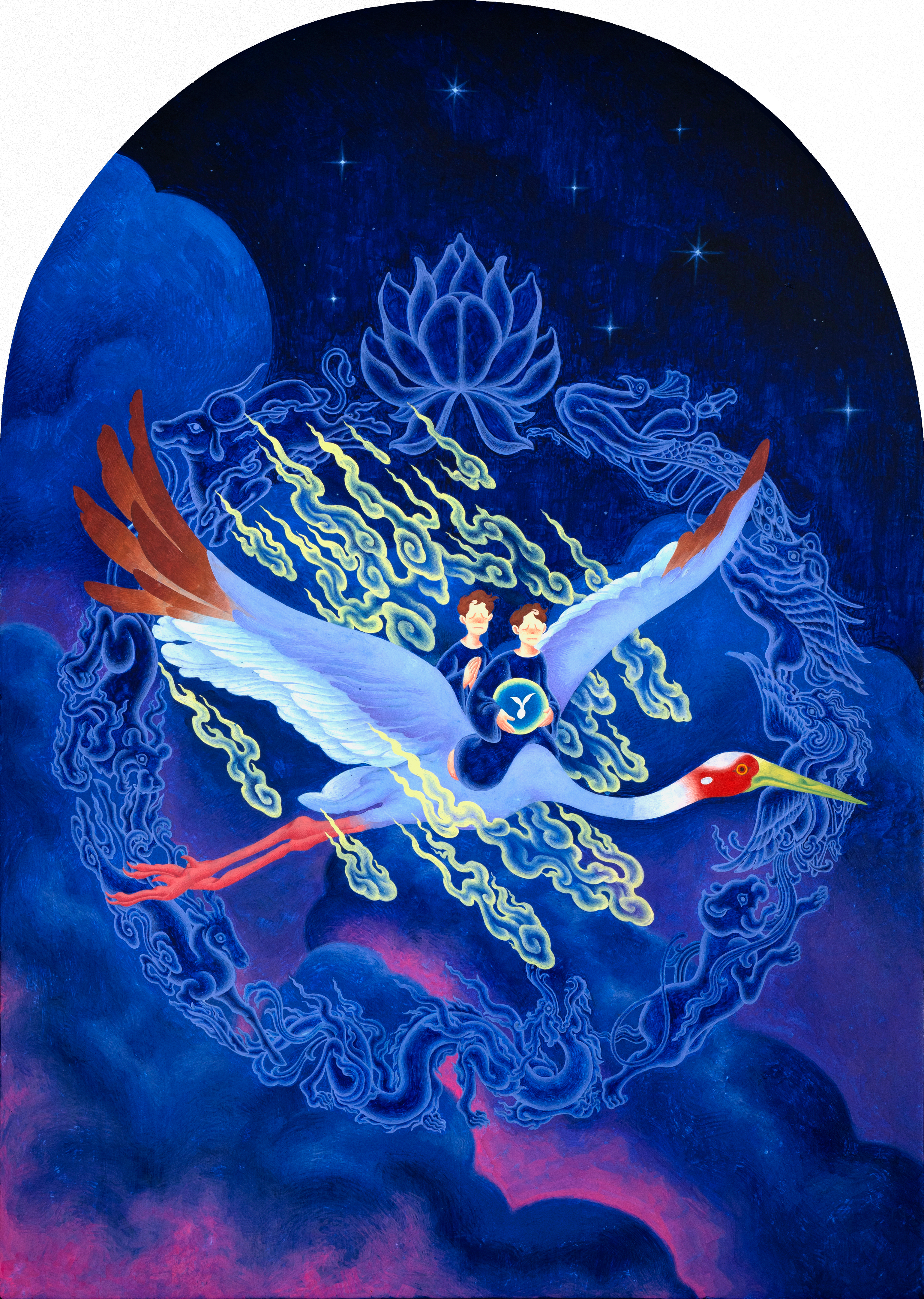
Ascension, 2024
The divine crane that was shot down miraculously returned to the caretakers as a phoenix. The bird then invites the pair to ascend to the heavenly realm, to receive the revelation and blessing of how they can rebuild their paradise again. The two caretakers then mounted the divine bird and flew through the layers of heaven. The souls of all the animals that died or fled the heavenly garden then return to them as constellations, blessing the two on the final chapter of their journey.
The divine crane that was shot down miraculously returned to the caretakers as a phoenix. The bird then invites the pair to ascend to the heavenly realm, to receive the revelation and blessing of how they can rebuild their paradise again. The two caretakers then mounted the divine bird and flew through the layers of heaven. The souls of all the animals that died or fled the heavenly garden then return to them as constellations, blessing the two on the final chapter of their journey.
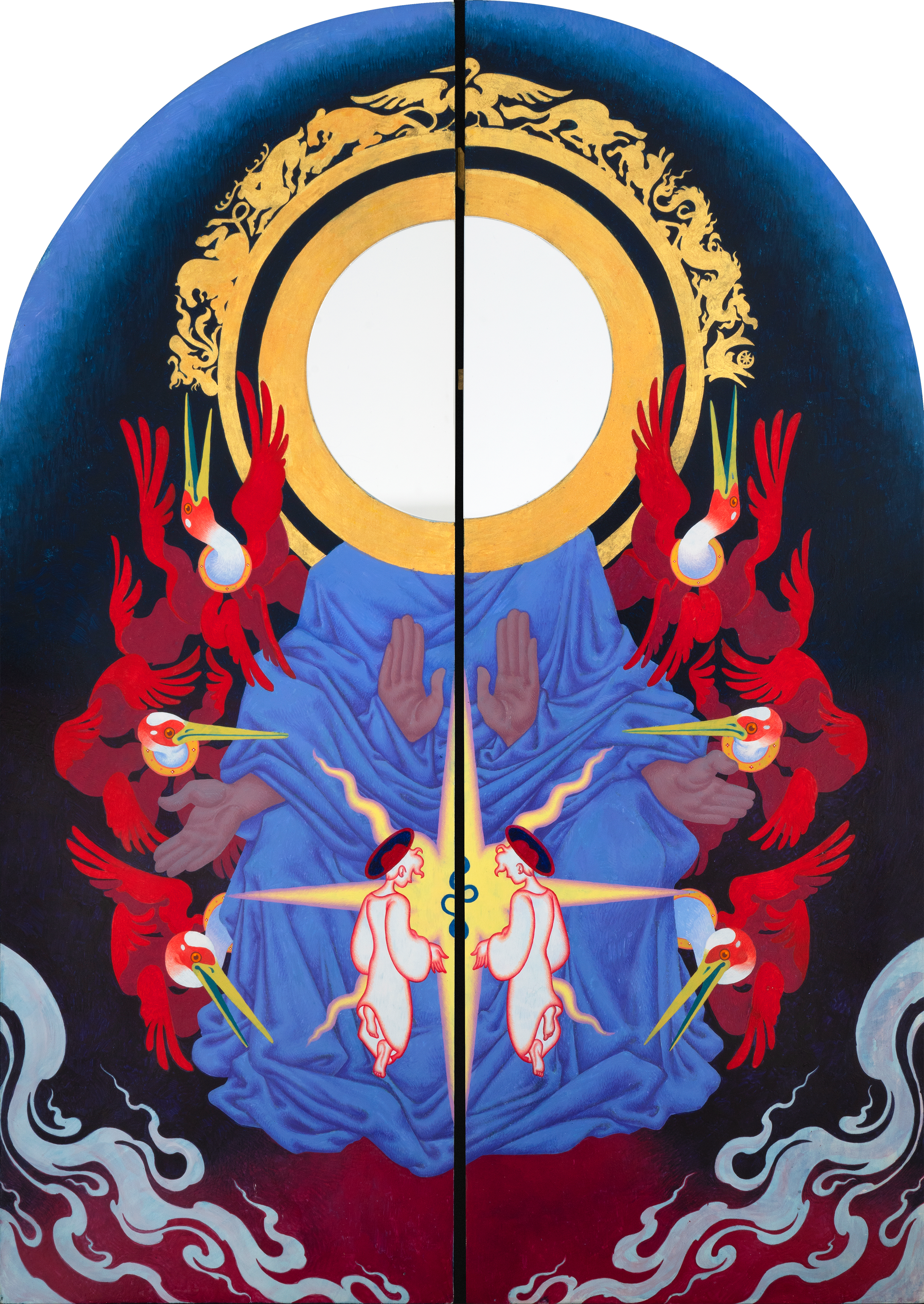
Revelation, 2024
As the crane reaches higher and higher into the heavenly realm, the barrier between reality and the abstract begins to blur until there’s nothing left but silence and the divine pair, left to contemplate all they’ve been through. Finally, the pair reached the abode of a divine consciousness. The divine presence bore the face of a mirror, reflecting the visage of the two caretakers, implying that the only people who could help them bring back their garden are themselves.
As the crane reaches higher and higher into the heavenly realm, the barrier between reality and the abstract begins to blur until there’s nothing left but silence and the divine pair, left to contemplate all they’ve been through. Finally, the pair reached the abode of a divine consciousness. The divine presence bore the face of a mirror, reflecting the visage of the two caretakers, implying that the only people who could help them bring back their garden are themselves.
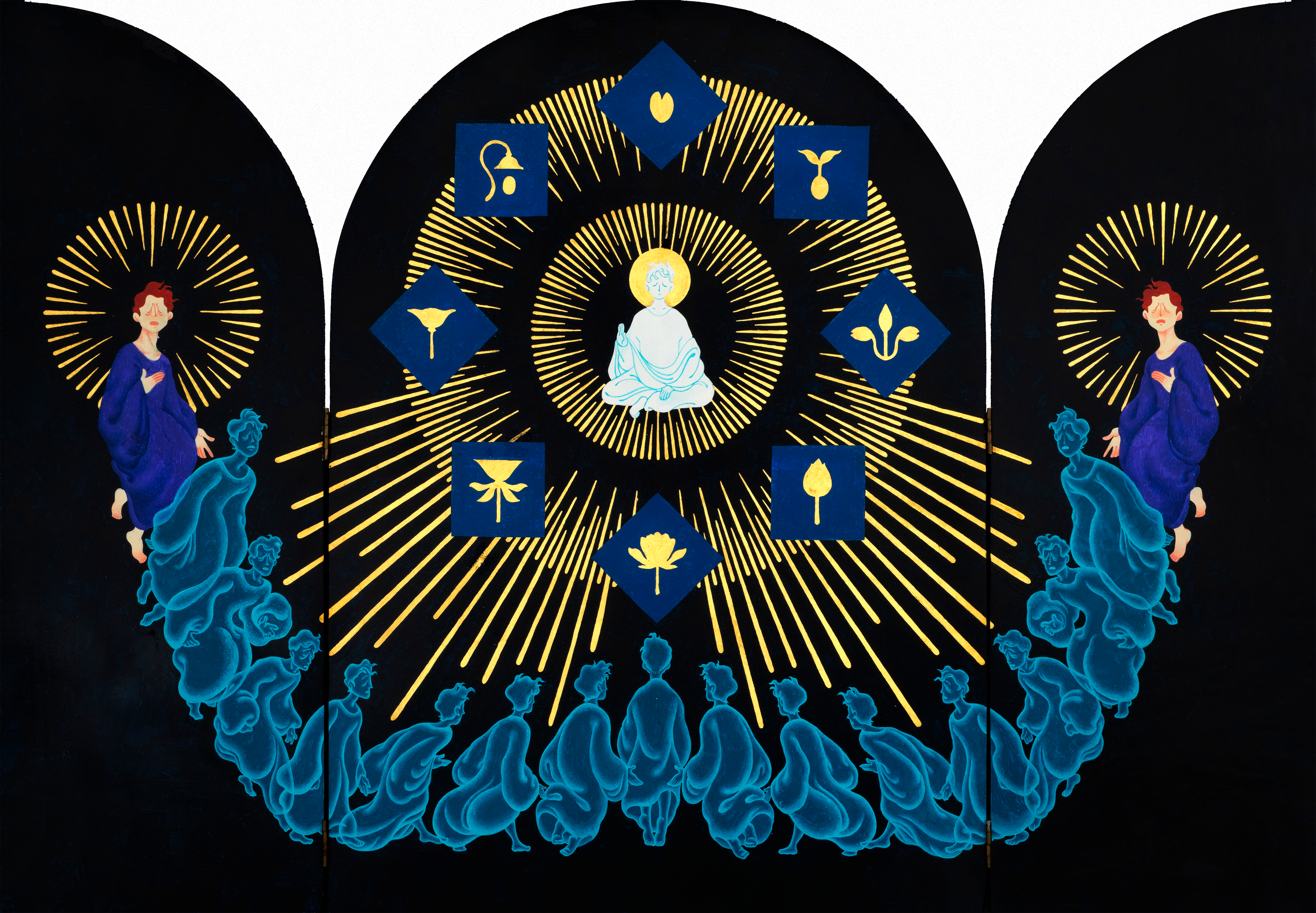
The interior of the triptych then further clarifies their journeys and existences. The two caretakers are actually one and the same, two facets of the same consciousness. Finally, in the abode of divinity, they joined together as individuals again. The interior of the painting also reveals that the divine presence they seek is also their own self, revealing the nature of their journey through the life cycle of the end, but to repeat eternally, with each cycle evolving them into a better version of themselves.
